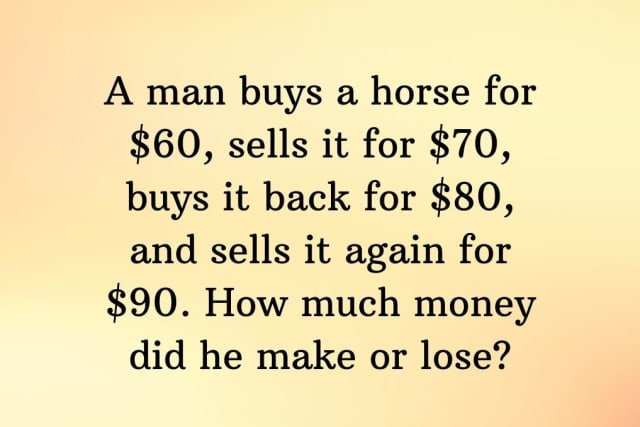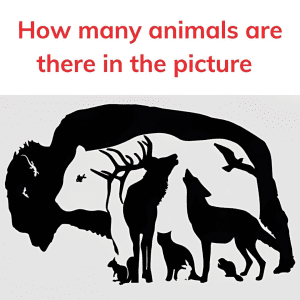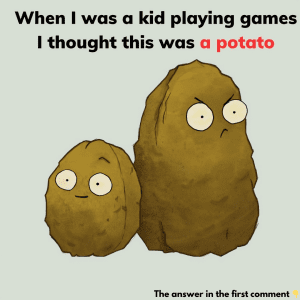If you’re ready to put your mind to the test, this riddle from a 1984 IQ test will have you scratching your head! It’s deceptively simple: a man buys a horse for $60, sells it for $70, buys it back for $80, and finally sells it again for $90. Is he making a profit or a loss, and how much is it? Let’s dive into the details and find out!
When you first read this riddle, it seems like there’s a lot of back and forth—almost like a circular game of buy-and-sell. It’s easy to get tangled up in the series of transactions, especially when trying to track the gains and losses across each deal.

1. The Initial Purchase and First Sale
The man starts by purchasing a horse for $60 and then sells it for $70. What happens here? Quite simply, he makes a profit of $10 on this first transaction. Here’s how it looks in mathematical terms:
- Bought for: $60
- Sold for: $70
- Profit: $70 – $60 = $10
At this point, the man is $10 up. So far, so good!
2. The Repurchase and Final Sale
After his initial profit, the man buys back the horse, but this time he pays $80. He then sells the horse again for $90. Let’s look at the profit from this second transaction:
- Bought back for: $80
- Sold for: $90
- Profit: $90 – $80 = $10
This second transaction adds another $10 in profit.
3. Adding It All Up: Total Profit
Now that we’ve broken down each transaction, let’s tally up the man’s total profit from both sales:
- First Transaction Profit: $10
- Second Transaction Profit: $10
- Total Profit: $10 + $10 = $20
So, after all the buying and selling, the man’s net gain is a solid $20 profit. While each individual transaction yielded a modest gain, together they provided a tidy little return.
Understanding the Business Savvy Behind the Riddle
This riddle isn’t just a math problem; it also hints at a larger concept in business: compounding small gains. By focusing on turning a quick profit through repeat transactions, the man demonstrates an ability to capitalize on minor market fluctuations. While $20 might not seem like a windfall, it’s a good example of how small, consistent profits can add up over time.
In many business settings, making small but regular profits can be a more reliable strategy than aiming for a single big payout. By leveraging small gains, the man effectively showcases a strategy that’s common among savvy traders and investors: make modest profits consistently rather than risk it all for one big win.
So, did the man make a profit or a loss? The answer is clear: he made a total profit of $20. By buying and selling the horse twice, he managed to leverage small price differences and accumulate a nice little gain.
This story serves as a reminder that sometimes, making a consistent profit from smaller transactions can be more effective than focusing solely on large gains. The man’s approach to this series of transactions reflects a simple yet powerful strategy that can be applied in various business and investment contexts.
If you enjoyed this riddle, why not challenge your friends to solve it? You might be surprised by how many different answers people come up with before arriving at the correct one. This riddle is an excellent example of how careful analysis and a bit of math can reveal the solution to what might seem like a complex problem.
In the end, the man made a tidy profit of $20 through a series of smart transactions. By focusing on small, incremental gains, he was able to leverage his resources and come out ahead. This riddle teaches a valuable lesson about breaking down complex problems into manageable steps and looking at each part of a situation individually to understand the whole.
Think you have a knack for solving these kinds of puzzles? Let us know in the comments how you approached this one, and don’t forget to share it with friends who enjoy a good brain teaser. After all, who doesn’t love a little mental workout every now and then?


